Enlightenment and Modernism in Art
| ✅ Paper Type: Free Essay | ✅ Subject: Arts |
| ✅ Wordcount: 3237 words | ✅ Published: 02 May 2018 |
Some people would describe the period of Modernism the latest and absolutely new movement in art, which appeared in 1850s and lasted until the 1970s. However, if looking at this period of time more careful, it becomes obvious that it is not just an art movement, it is the whole world’s evolution within different contexts. I would say an epoch of Modernism is the start point of not only the world’s biggest changes and revolutions but also of human mind’s evolution. This essay is showing my review of the topic “What is Modernism”. First part of it contains the explanation of my own understandings of the modernist period of 1850-1970s, based on research I have produced. My second part includes a review of selected Modernist object that I have found in Victoria and Albert Modernist permanent collection when visiting a museum. In this part I described The Festival Pattern Group of 1951, its historical relation to my timeline and the wallpaper “Boric Acid 8.34” as a particular example from the museum’s collection. The third part is a paragraph concerning the description of “The Beatles” band and their album “Let It Be” within the context of “You say you want a Revolution (1966-1970)” exhibition. In addition to my review, I also explained my own appeal to those objects and why I considered they are important to write about. Conclusion is the last part of my essay that is summarizing all parts together in a thought-provoking way.
The period of Enlightenment or in other words, the Age of Reason, is time when politics, philosophy, science, and communications were radically reoriented. Philosophers argued the human nature’s origin, scientists invented new technologies, and politicians were involved in revolutions where wars took place (Crouch, 1999). During this period of time many intellectuals achieved great accomplishments and contribution. For example, Sir Francis Bacon1, an English philosopher, argued that people should avoid misleading tendencies that distort truths. As a result, he became one of the leading figures in the English Scientific Revolution (The Enlightenment: Sir Francis Bacon, 2017). Another significant philosopher-mathematician who influenced rationalism was Rene Descartes2. Both of them are considered as “Fathers of the Enlightenment” (Biography Online, 2017). Age of Reason affected Christianity, and as a result, two distinguishable schools of religion occurred: Rational supernaturalism and Deism (Newworldencyclopedia.org, 2017). At the same time there was an anti-religious innovation when people argued that universe determines its own course, rather than with the help of God’s intervention (Newworldencyclopedia.org, 2017). Moreover, it was time of experimentation and reason, questions and answers. The Enlightenment was a period when the solar system was completely discovered with the help of Newton’s theory of universal gravitation (Mo Lea, 2016). The French Revolution of 1789 was a political outcome of the Age of Reason when Louis XVI was executed and Napoleon Bonaparte began his dictatorship (Mo Lea, 2016). Culmination of the Enlightenment led to the bloody terror. In the decades surrounding all these revolutions and violence, the visual arts, like other realms of culture, experienced radical change and experimentation.
An epoch after Enlightenment is an epoch of Modernism. In Art History the period of Modernism started in 1850s and lasted for 120 years until the 1970s (Crouch, 1999). It is time of re-appropriation, rejection of tradition in light of new social and political advances created in the industrialized world (Mo Lea, 2016). When comparing the works before and after this period, a dramatic change can be seen: realistic images changed to abstract representations of subject. This is mostly due to invention of the first Kodak camera by George Eastman in 1888 (Kodak.com, 2017). Before the invention of photography, the primary role of the painter was to record people and events as accurately as possible. However, now artists could start experimenting with aesthetics – the philosophy of beauty (Visual-arts-cork.com, 2017). Moreover, they grouped into “movements” according to their particular aesthetics.
There are many discussions on who is the modern art’s founder: is it Edouard Manet3 (1832-1883) or Paul Cezanne5 (1839-1906) (Jones, 2017). Personally, I consider both of them as “Fathers of Modernism”. Paul Cezanne did much afford to develop new kind of artistic-analytical practice that led to abstract art. Moreover, his works directly inspired Picasso and Braque in Cubist experiments (The Art Story, 2017). Edouard Manet’s painting “Luncheon on the Grass”6 (1863) was shocking and obscene. Furthermore, this painting’s technique was contrary to the accepted academic style which also led to new modernist representation of objects (Manet.org, 2017). Freedom of expression and primitivism with bizarre effects are characteristic to Modernism era (Crouch, 1999). In addition, if looking at art pieces of different modernist movements, new materials and techniques were used more often.
The most decisive events in the world were the WWI (1914-1918) and WWII (1939-1945), which divided up modern art in three groups: Pre-War, Interwar, and Post-War Modern Art. According to this division, the Pre-War art period started with Impressionism (1870-1890) that changed to Post-Impressionism (1880-1905), which gave place to Symbolism (1880s-early 1910), Art Nouveau (late 1880s-1910), Fauvism (1899-1908), Art Deco (1900-1945), Expressionism (1905-1933), Cubism (1907-1922), and Futurism (1909-1920s) (The Art Story, 2017). The year of 1851 is a birth year of first international exhibition of manufactured objects, named as Great Exhibition (later Victoria and Albert Museum) and organized by inventor Henry Cole and Prince Albert in Hyde Park, Britain (Mo Lea, 2016). Sometime later the first practical sound recording and reproduction device, known as mechanical phonograph cylinder was invented (1877) (Mo Lea, 2016). Moreover, by the beginning of 1900th technical manufacture progressed: the first successful airplane was invented in 1903 (Mo Lea, 2016). An outcome of such inventions was Industrial Revolution. Eiffel Tower became an emblem of engineering and technology built on the 100thanniversary of French Revolution (Mo Lea, 2017). The years of WWI and WWII were the most horrific that affected society and the world in whole. In 1917, while Interwar period, there was Russian Revolution and, as a result, new communist government created the country of the Soviet Union with Joseph Stalin’s leadership (Ducksters.com, 2017). Furthermore, all women were now given equal rights along with men. By early 1921, Adolf Hitler becomes the Nazi Party’s Leader (Historyplace.com, 2017). Avant-garde, which is experimental art, was misunderstood and rejected by Communist government and Nazi Party due to that kind of works were not found aesthetically pleasing. Moreover, many works by modern artists were labeled “Degenerate” and destroyed (Filmfest716, 2017).
As speed was becoming the most important thing during this time, modern life’s dynamism influenced artists and new movements occurred: Constructivism (1915-1930s), Dada (1916-1924), De Stijl (1917-1931), Surrealism (1924-1966) (The Art Story, 2017). As there was political instability in a world, many artists represented war and peace in their works, such as Pablo Picasso’s weeping woman6 painted in 1937 was a kind of his respond to horrific bombing at Guernica, taken place at the time of the Spanish Civil War (Mo Lea, 2016).
The most influential art and design school of the 20th century was Bauhaus (1919-1933), established by German architect Walter Gropius. His concept was very revolutionary: he wanted to combine architecture, sculpture and painting with crafts and engineering to create a new style that would unite beauty and usefulness (world, 2017). Many full-length films were produced during this decade, such as Metropolis (1927) – German expressionist science-fiction drama directed by Fritz Lang and influenced by Bauhaus, Cubism and Futurism (Mo Lea, 2017).
During the Post-War years, more and more artists started moving from Paris to New York. In 1947 Jackson Pollock created new way of abstraction painting through applying layers and drips of opaque paint. Such abstractions were also represented by other artists, which led to new Abstract Expressionist movement’s establishment (1943-1945). Another group of artists encouraged viewers to use critical thinking when observing absurd abstract works of Neo-Dada movement (1952-1970). As because there were mostly men in art industry, women artists were concerned with equal representation in art institutions; so feminist artists of 1960s combined aspects of various movements into Feminist art works that message about the need of gender equality. Another part of the wider conceptual art movement in the 1960s and 1970s was Pop Art. Artists, such as Andy Warhol, embraced the post-war manufacturing and media boom to create their own style. Alongside with Pop Art, popular was Op Art (1964) that stressed on illusion. In comparison with long-lasted movements, there were some that lasted for less than a decade, such as Minimalism (1960s) (The Art Story, 2017). However, new ideas and styles were represented not only in paintings and architecture but almost in every medium. Quite popular movement in 1960s was becoming Earth Art, which is sculpting of the land using natural materials, such as rocks (Mo Lea, 2017). One of the most famous land art works is Robert Smithson’s “Spiral Jetty” 7 (1970), which I concern as a very attractive and unique art style. While art world was developing, there were some political instabilities on the background, such as African-American Civil Rights Movement in the United States. Their goal was to stop discrimination concerning education, voting rights, and social segregation (Scholastic.com, 2017). Another important event in US history at Post-War modernist period was Neil Armstrong and Buzz Aldrin’s moon landing experience (1969) (Nasa.gov, 2017).
By the end of the Modernism period there were many inventions and establishments made, however, it continues to expand in Post-Modern society. Nowadays, there are lots of museums, such as Guggenheim Museum founded in 1937 by Solomon R. Guggenheimand V&A Museum in Britain, where people can observe preserved collections.
Personally, I am pleased that I had opportunity to visit Victoria and Albert Modernist permanent collection not a long time ago. An exhibition included objects not only from the mid period of Modernism but also from the Post-War years. As the timeframe I was given lies up to the 1970s, I am going to make a review about The Festival Pattern Group of 1951 because in comparison with other projects and movements, this one was the most pleasing that I found. Moreover, I was very amazed with the concept of bringing together science and art. The particular object I found amazing is wallpaper “Boric Acid 8.34”8 designed by William J. Odell and manufactured in 1951 by John Line & Sons Ltd for the Festival of Britain (Jackson, 2008). Its design remains the crystalline structure of boric acid (Jackson, 2008). The reason why it appeals to me is because I like its colour scale as much as the whole concept. The print looks fascinating and fashionable, as far as scientific and enigmatic. I like how yellow, red, white, and dark-green colours work together. Its roots belong to The Festival Pattern Group (FPG) which was an organization formed in 1949 and consisted of 28 manufacturers, X-ray crystallographers and designers working conjointly and inspiring each other (Pattern BeneathThe Surface. The Festival Pattern Group, 2017). According to Mary Schoeser’s explanations, this project allowed ordinary people get closer to science through the visual language of the patterns of atomic structures (Wellcome Collection, 2008). As the years after WWII were the years of turmoil, British government wanted to make people feel recovered. So in 1951 FPG was the subject of an exhibition at the Festival of Britain. Banham and Hillier (1976) outline that Festival of Britain was considered by people differently: to some, it was a glorious “monument to the future”; however, others called it “a tawdry carnival” and were worried that it will set British design on the wrong course for years. However, in the words of Sir Gerald Barry, Director-General of the Festival, it provided “A Tonic to the Nation” (Stewart, 1987). As my chosen object relates to FPG, I would say that its aim turned out really well, especially by the example of wallpapers that bring science and design together. In addition, even scientists, whose names were not credited in order to protect their scientific reputations, were positively astonished with the result (Jackson, 2008). In my opinion, the particular object I described is very distinctive and deserves to be a part of V&A Modernist permanent collection. As because 1950s and 1960s were decades of rapid change, it is important to show people that good design ideas can come from absolutely every field. As one of the advantages, manufacturers wanted to increase Britain’s export power through production of new, intriguing patterns for textiles, wallpapers, floor coverings etc. Such production promoted increased interest in exploring micro materials and nanotechnology, which is fully developed nowadays (Festival Pattern Group, 2017). It proved that science and art can match and truly impact each other.
The historical background of the Fifties and Sixties was vast. One of the most important events in British history is the date of Queen Elizabeth’s II coronation that happened on the 2nd June 1953. Almost every aspect of society was affected by revolutionary changes: teenagers were given a voice and freedom to do what they wanted, so drugs became more commonly used. Very influential ideology was becoming feminism: more jobs became available to young women. Moreover, they were free to wear attractive mini. By the late 1960s very vivid colours and prints were more popular, that became considered as a “hippie” style (The 1960s. The Decade That Shook Britain. 2017).
In conclusion of this part I would say that such revolutionary Modernist ages continue up to nowadays. Furthermore, 1951 Festival of Britain and FPG’s collection, which we can observe today in Victoria and Albert museum, is only one of the examples of how British design evolved.
There are many exhibitions taken place at the V&A museum and one of the most recent ones is “You say you want a Revolution” of 1966-1970. In this part of my essay I am going to write a review about the influence of the popular musical band – “The Beatles”9and their album “Let It Be” in particular. I really love the expression by composer Aaron Copland: “If you want to know about the Sixties, play the music of the Beatles.” (Broackes and Marsh, 2016). I strongly believe that all those revolutions that took place in different areas, such as fashion, music, festivals or human rights’ protests between the years of 1966 and 1970 shaped our modern society in the way we live today.
The Beatles started their career in Liverpool in 1960 and the band consisted of four members: John Lennon, Paul McCartney, George Harrison and Ringo Starr. The Beatles are an excellent example of how music influenced younger generation of Sixties. Recreational drugs, such as marijuana and LSD were widely experienced by the band members and, as a result, by their followers. What is in common nowadays relating drugs, in my opinion, is that it is very difficult for people in show business to avoid becoming involved in a “drug world” and the saddest thing is that it encourages youth to follow their idols. In the decade of 1960s, LSD made people feel happy and, in addition, it promoted “hippie” movement (The 1960s. The Decade That Shook Britain. 2017). Moreover, the band’s thick moustaches and longer hair were a marker of the hippy style that exists even nowadays (Broackes and Marsh, 2016). John Lennon’s song “Give Peace a Chance” showed people the pointless of war, and, as a result, young people of “hippie” movement started pursuing peace and freedom (The 1960s. The Decade That Shook Britain. 2017).
Even if their career did not last long, the Beatles’ success definitely inspired society to start experimenting. Their last album “Let It Be”, recorded in May 1970, one month after the Beatles had broken up, shows visually their distinct separation: there are four individual portraits of band members on the album cover (Broackes and Marsh, 2016). The idea behind the album was meant to capture them singing “live in the studio” without any effects, however, due to re-production of the tracks, the idea was later changed by their producer (The Beatles, 2017). In my point of view, “The Beatles” is a legendary band that is still unforgotten and is still loved by many people in the world. I am sure that if something was considered as a legend in a past, will definitely stay legend in the future. So, the exhibition “You say you want a Revolution” could not show all the revolutionary changes and impacts in the world without having the Beatles’story and albums exhibited there. The importance of band being mentioned on the exhibition is very necessary due to it helps to understand the real scale of its influence on society.
The affect of Beatles can be considered in three ways. Firstly, they affected society socially and culturally by bringing hippies together through music and festivals. Secondly, there was a political affect on society: spreading of drug culture and peace movements. Lastly, their intellectual affect promoted new beliefs showing people new ways of life. (Worldwide Hippies, 2017).
The reason why I chose to write a review just about this particular band is because I love their music due to even while listening to their songs now, in modern society, their music still makes me dreaming of a better world. To sum up, the V&A’s exhibition “You say you want a revolution” made me feel deeply the years of 1966-1970. The content was very cognitive and visually representative: I could observe all the developments from the civil rights to multiculturalism, from the permissive society to feminism and gay liberation, from environmentalism to communality.
In conclusion of my essay, I would like to highlight that an epoch of Enlightenment and Modernism was a period of re-appropriation, rejection, and revolution. From the architectural point of view, the start point of Modernism was the construction of Eiffel Tower and its end point was building up the Pompidou – an iconic landmark in Paris that contains over 50000 works of art, including paintings, sculpture, drawings, and photography (Mo Lea, 2017). Moreover, I would consider the Modernism as one the most important time periods in history due to many inventions were created, crucial events took place, and variety of outcomes happened within different contexts. Such cultural processes and developments gave us our world of rapid communication, urbanization, and consumer goods. Each decade of the modernist timeframe influenced society differently. My favourite time period of Modernism is the decade of Fifties and Sixties because these years are Post-War years of recovery and big social revolutions. My review of The Festival Pattern Group and The Beatles serve as an evidence of that. Each of them represented different cultural impact alongside with development of new ideology. Both of them served as recovery for people: objects made by The Festival Pattern Group were exhibited at the Festival of Britain, which was a diversion for people that helped to forget about horrifying years of war; The Beatles were considered to be idols for youth, nevertheless taking drugs. If we are talking about the period from 1850s until 1970s, so we are talking about revolutionary term.
I would like to sum up my essay with Charles Dickens interpretation of this vast period (Broackes and Marsh, 2016):
“It was the best of times, it was the worst of times, it was the age of wisdom, it was the age of foolishness, it was the epoch of belief, it was the epoch of incredulity, it was the season of Light, it was the season of Darkness, it was the spring of hope, it was the winter of despair, we had everything before us, we had nothing before us, we were all going direct to Heaven, we were all going direct to other way”

1. (Francis Bacon n.d.)

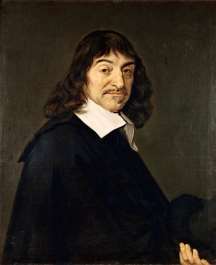
2. (Rene Descartes n.d.)



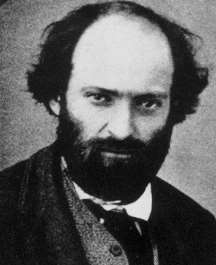
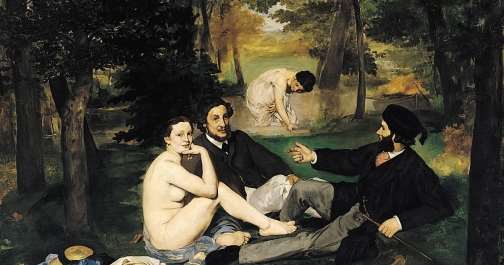
5. (“Luncheon on the Grass” by Edouard Manet 1863)


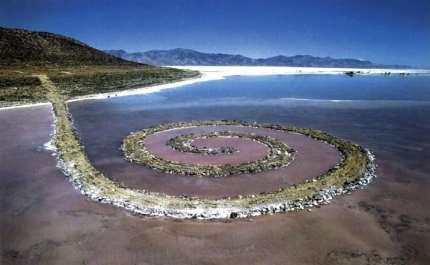
7. (Gorgoni n.d.)
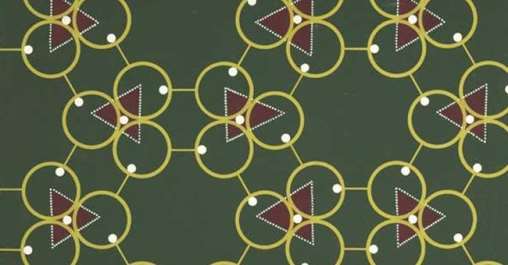
8. (“Boric Acid 8.34” 1951)
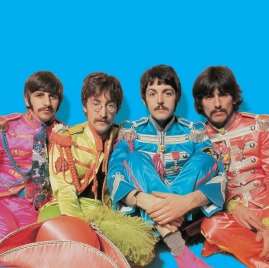
9. (“The Beatles” n.d.)
Cite This Work
To export a reference to this article please select a referencing stye below:
Related Services
View allDMCA / Removal Request
If you are the original writer of this essay and no longer wish to have your work published on UKEssays.com then please click the following link to email our support team:
Request essay removal



